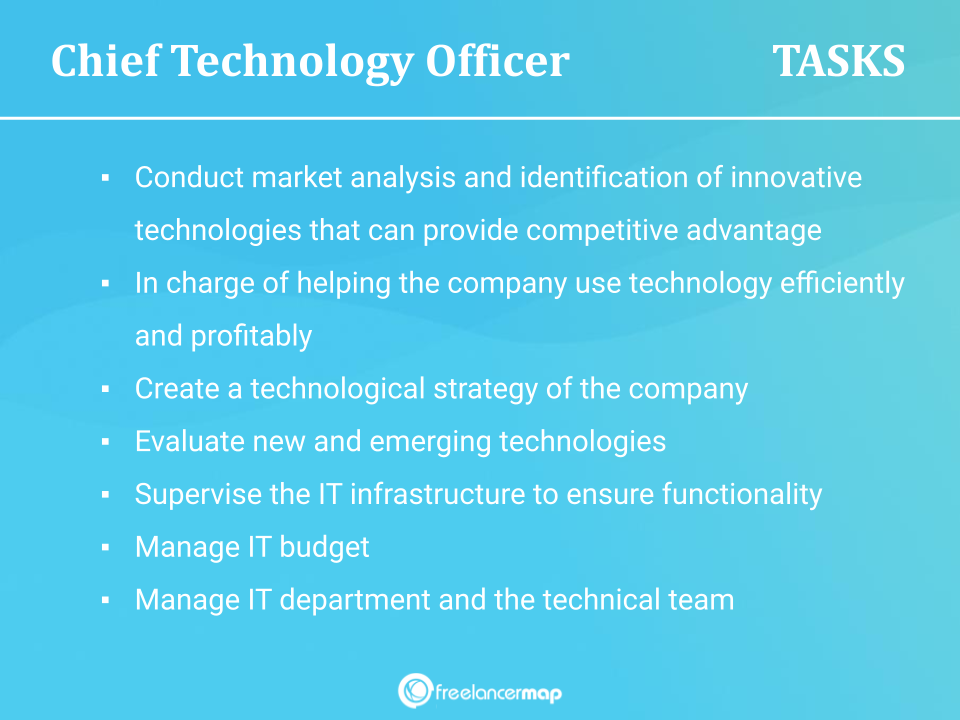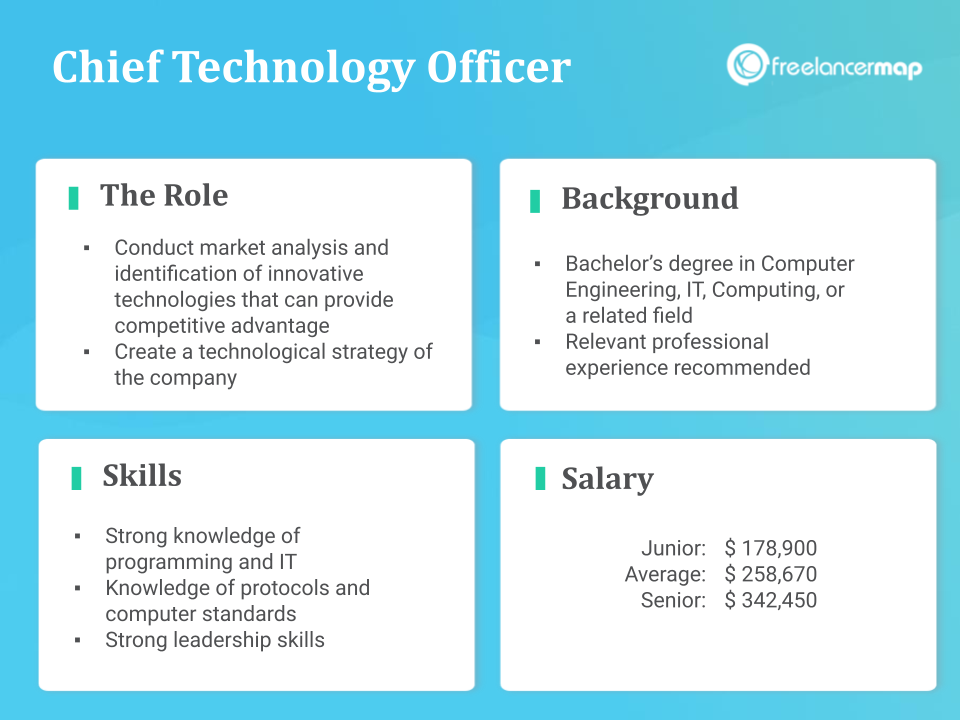Chief Technology Officer Executive Search: Finding the Right Leader
Chief Technology Officer executive search is a critical process for organizations seeking to find the right leader to drive innovation and technological advancements. The CTO role has evolved significantly in […]

Chief Technology Officer executive search is a critical process for organizations seeking to find the right leader to drive innovation and technological advancements. The CTO role has evolved significantly in recent years, requiring individuals with a deep understanding of emerging technologies and the ability to navigate complex technical landscapes.
Finding the perfect CTO involves a rigorous executive search process that goes beyond simply looking for technical expertise. It requires a comprehensive assessment of a candidate’s leadership skills, strategic vision, and cultural fit within the organization. The goal is to identify a CTO who can not only guide the company’s technology strategy but also inspire and motivate their team to achieve ambitious goals.
The Role of the Chief Technology Officer (CTO)

The Chief Technology Officer (CTO) is a critical leadership role in today’s technology-driven business landscape. This executive is responsible for overseeing the organization’s technological strategy, driving innovation, and ensuring the efficient and effective use of technology to achieve business goals.
Primary Responsibilities and Duties of a CTO
The responsibilities of a CTO are multifaceted and encompass various aspects of technology management, including:
- Developing and Implementing Technology Strategy: CTOs are responsible for creating and implementing a comprehensive technology strategy aligned with the organization’s overall business objectives. This involves identifying technology trends, assessing potential risks and opportunities, and developing a roadmap for technology adoption and deployment.
- Leading Technology Teams: CTOs lead and manage teams of engineers, developers, data scientists, and other technology professionals. They are responsible for hiring, training, and motivating their teams to deliver high-quality technology solutions.
- Managing Technology Infrastructure: CTOs oversee the organization’s technology infrastructure, including hardware, software, networks, and data centers. They ensure that the infrastructure is reliable, secure, and scalable to support the organization’s growing needs.
- Driving Innovation and Technological Advancements: CTOs are responsible for identifying and evaluating new technologies that can improve the organization’s operations, products, and services. They champion innovation and foster a culture of experimentation and continuous improvement within the organization.
- Ensuring Cybersecurity and Data Privacy: CTOs play a critical role in protecting the organization’s data and systems from cyber threats. They implement cybersecurity measures, develop data privacy policies, and ensure compliance with relevant regulations.
- Collaborating with Business Leaders: CTOs work closely with other executives, such as the CEO, CFO, and CMO, to ensure that technology decisions align with the organization’s overall business strategy. They communicate technology trends and opportunities to business leaders and help them understand the potential impact of technology on their respective areas.
Strategic Importance of the CTO Role
The CTO role is strategically important because it drives innovation and technological advancements within organizations. A skilled and visionary CTO can:
- Enhance Operational Efficiency: By leveraging technology to automate processes, streamline workflows, and improve data management, CTOs can significantly enhance operational efficiency and reduce costs.
- Develop New Products and Services: CTOs are instrumental in developing new products and services that leverage cutting-edge technologies to meet evolving customer needs and create competitive advantage.
- Improve Customer Experience: By implementing technology solutions that enhance customer interactions, provide personalized experiences, and improve customer service, CTOs can significantly improve customer satisfaction and loyalty.
- Foster a Culture of Innovation: CTOs are responsible for creating a culture of innovation within the organization by encouraging experimentation, embracing new technologies, and supporting the development of new ideas.
Evolution of the CTO Role
The CTO role has evolved significantly over the years, adapting to the rapidly changing technological landscape. In the past, CTOs were primarily focused on managing IT infrastructure and ensuring the smooth operation of technology systems. However, as technology has become increasingly integrated into all aspects of business, the role of the CTO has expanded to encompass a broader range of responsibilities, including:
- Strategic Thinking: Today’s CTOs are expected to be strategic thinkers who can understand the big picture and align technology decisions with the organization’s overall business objectives.
- Data-Driven Decision Making: CTOs are increasingly relying on data analytics and insights to make informed technology decisions and measure the impact of their initiatives.
- Agile Development: CTOs are embracing agile methodologies and DevOps practices to accelerate software development and deployment cycles.
- Cloud Computing Expertise: As cloud computing becomes increasingly prevalent, CTOs are expected to have a deep understanding of cloud technologies and be able to leverage cloud services to enhance the organization’s agility and scalability.
- Cybersecurity and Data Privacy: With the growing threat of cyberattacks, CTOs are taking on a more prominent role in ensuring cybersecurity and data privacy within their organizations.
The Executive Search Process for CTOs
Recruiting and hiring a top-tier Chief Technology Officer (CTO) is a complex and demanding process. It requires a deep understanding of the technology landscape, the specific needs of the organization, and the unique skills and experience required for success in this role.
Challenges in Recruiting Top-Tier CTOs
Finding and securing the right CTO for your organization presents unique challenges. These challenges stem from the highly competitive nature of the technology talent market and the unique requirements of the CTO role.
- Limited Talent Pool: The pool of qualified candidates with the right blend of technical expertise, leadership skills, and strategic vision is relatively small.
- High Demand: Top-tier CTOs are highly sought after by companies across industries, creating intense competition for their services.
- Specialized Skills: CTOs need a unique combination of technical proficiency, business acumen, and leadership qualities. Finding candidates who possess all these attributes is a significant challenge.
- Compensation Expectations: Top-tier CTOs command high salaries and compensation packages, which can be a barrier for some organizations.
- Cultural Fit: Ensuring that a CTO’s leadership style and values align with the company’s culture is crucial for long-term success.
Key Steps in the Executive Search Process for CTO Positions
The executive search process for CTO positions typically involves several key steps designed to identify, assess, and ultimately recruit the most qualified candidate.
- Defining the Requirements: This step involves collaborating with the client to understand the specific technical, leadership, and strategic needs of the CTO role. It includes defining the key responsibilities, desired skills, and cultural fit.
- Candidate Sourcing: Executive search firms employ a variety of methods to identify potential candidates, including networking, database searches, and targeted outreach. They leverage their industry knowledge and relationships to access a wider pool of qualified candidates.
- Candidate Assessment: The assessment process involves evaluating candidates’ technical expertise, leadership experience, and strategic thinking. This may include interviews, skills assessments, and reference checks.
- Candidate Presentation: Once a shortlist of qualified candidates is identified, the search firm presents them to the client for consideration. They provide detailed profiles and insights into each candidate’s strengths, experience, and potential fit.
- Negotiation and Onboarding: The search firm assists in negotiating the compensation package and facilitating a smooth transition for the selected candidate.
Utilizing Specialized Executive Search Firms, Chief technology officer executive search
Engaging a specialized executive search firm offers several advantages in the recruitment of CTOs.
- Industry Expertise: Executive search firms specializing in technology have deep knowledge of the industry, the talent pool, and the specific requirements of CTO roles.
- Extensive Network: They have access to a wider network of potential candidates, including passive candidates who may not be actively seeking new opportunities.
- Rigorous Assessment: Their assessment processes are designed to identify the most qualified candidates based on a comprehensive evaluation of their skills, experience, and potential.
- Time and Resource Savings: Hiring a search firm allows organizations to focus on their core business while the search firm handles the time-consuming and resource-intensive recruitment process.
- Improved Candidate Quality: Specialized search firms can identify and present a higher caliber of candidates, leading to a better overall outcome for the hiring process.
Essential Skills and Qualifications for CTOs: Chief Technology Officer Executive Search

The role of a Chief Technology Officer (CTO) demands a unique blend of technical proficiency, leadership acumen, and strategic foresight. A successful CTO must not only possess deep technical expertise but also excel in communication, collaboration, and driving innovation across the organization. This section will delve into the essential skills and qualifications that define a successful CTO.
Technical Proficiency
Technical proficiency forms the bedrock of a CTO’s success. A CTO must have a deep understanding of various technologies, including software development, cloud computing, data analytics, cybersecurity, and emerging technologies. This expertise enables them to make informed decisions, guide technology strategy, and effectively manage the technology team.
- Software Development: Proficiency in software development methodologies, programming languages, and software architectures is crucial. Experience with agile development, DevOps practices, and cloud-native architectures is highly valued.
- Cloud Computing: Understanding cloud platforms like AWS, Azure, and Google Cloud is essential. Experience with cloud infrastructure management, security, and cost optimization is beneficial.
- Data Analytics: Familiarity with data warehousing, data mining, and machine learning techniques is becoming increasingly important. Understanding how to leverage data to drive business insights is a valuable asset.
- Cybersecurity: A CTO must be well-versed in cybersecurity best practices, threat detection, and incident response. Experience with implementing security controls and managing cybersecurity risks is essential.
- Emerging Technologies: Staying abreast of emerging technologies like artificial intelligence (AI), blockchain, and the Internet of Things (IoT) is critical. Understanding their potential impact on the business and how they can be leveraged is crucial.
Leadership and Communication Skills
A CTO is a leader who inspires and motivates the technology team. Effective communication skills are vital for building relationships, fostering collaboration, and driving consensus across the organization.
- Strategic Vision: A CTO must have a clear vision for the technology roadmap and be able to articulate it effectively to stakeholders, including the CEO, board members, and other executives. This vision should align with the company’s overall business strategy and goals.
- Team Leadership: A CTO must be an effective leader who can motivate, mentor, and develop their team. They need to create a culture of innovation, collaboration, and continuous improvement.
- Communication: A CTO must be able to communicate technical concepts clearly and concisely to both technical and non-technical audiences. This includes presenting complex information in a way that is easily understood and actionable.
- Relationship Building: Building strong relationships with internal stakeholders, such as business units, finance, and legal, is crucial. A CTO must be able to collaborate effectively and build consensus across departments.
Strategic Thinking and Business Acumen
A CTO must have a strong understanding of business strategy and be able to align technology investments with business goals. They need to think strategically about the role of technology in driving business growth and competitive advantage.
- Business Acumen: A CTO must have a solid understanding of the company’s business model, industry trends, and competitive landscape. This enables them to make informed decisions about technology investments and prioritize projects that will deliver the greatest value to the business.
- Strategic Planning: A CTO must be able to develop and execute a long-term technology strategy that aligns with the company’s overall business objectives. This includes identifying key technology trends, anticipating future needs, and making strategic investments in new technologies.
- Cost Management: A CTO must be able to manage technology costs effectively, ensuring that investments are made wisely and that resources are used efficiently. This includes optimizing cloud infrastructure, negotiating contracts, and managing vendor relationships.
- Risk Management: A CTO must be able to identify and mitigate technology risks, such as cybersecurity threats, data breaches, and system outages. This includes implementing appropriate security controls, developing disaster recovery plans, and ensuring compliance with industry regulations.
Industry Experience and Domain Expertise
Industry experience and domain expertise in specific technology sectors can be highly valuable for a CTO. This knowledge enables them to navigate industry-specific challenges, understand the competitive landscape, and make informed decisions about technology investments.
“The ideal CTO brings a blend of deep technical expertise, strategic thinking, and a passion for driving innovation. They are not just technology experts, but business leaders who understand how technology can create value for the organization.”
Key Considerations for CTO Candidates
Finding the right CTO is crucial for any company that relies heavily on technology. While technical skills are essential, it’s equally important to consider other factors that contribute to a successful fit.
Cultural Fit and Organizational Values
A CTO’s impact extends beyond technical expertise; they are often leaders who shape the company’s technology culture. Therefore, it’s critical to evaluate how well a candidate aligns with the organization’s values and culture.
- Shared Vision: Does the candidate understand and resonate with the company’s overall vision and mission? A shared vision ensures that the CTO’s technological strategies align with the company’s long-term goals.
- Leadership Style: Does the candidate’s leadership style complement the company’s existing culture? Consider whether their approach is collaborative, results-oriented, or a blend of both. A mismatch in leadership style can create friction and hinder team performance.
- Communication and Collaboration: Effective communication is crucial for a CTO to effectively lead technology teams, collaborate with other departments, and communicate complex technical concepts to non-technical stakeholders.
Assessing Candidates’ Vision and Alignment with Company Goals
A CTO’s vision for technology should be in sync with the company’s strategic goals.
- Strategic Alignment: Does the candidate’s vision for technology innovation and adoption align with the company’s business strategy and future growth plans? For example, a company focused on data-driven decision-making might seek a CTO with a strong background in data analytics and machine learning.
- Technology Roadmap: Does the candidate have a clear and well-defined technology roadmap that Artikels the key technology initiatives and investments needed to support the company’s growth trajectory? This roadmap should demonstrate a forward-thinking approach and a deep understanding of emerging technologies.
- Risk Assessment: Can the candidate effectively assess and mitigate the risks associated with adopting new technologies? This includes evaluating potential security threats, cost implications, and the impact on existing systems.
Evaluating a Candidate’s Ability to Manage Complex Technology Teams and Projects
A CTO’s success depends heavily on their ability to lead and manage complex technology teams and projects.
- Team Building and Leadership: Can the candidate build and motivate high-performing technology teams? This involves fostering a culture of collaboration, innovation, and continuous learning. Strong leadership skills are essential for attracting and retaining top talent.
- Project Management Skills: Does the candidate have a proven track record of successfully managing large-scale technology projects, ensuring timely delivery, and meeting budget constraints? This includes the ability to prioritize tasks, manage resources effectively, and handle unexpected challenges.
- Problem-Solving and Decision-Making: Can the candidate analyze complex technical problems, identify potential solutions, and make sound decisions under pressure? This includes the ability to weigh different options, assess risks, and communicate decisions effectively to stakeholders.
The Future of CTO Executive Search

The CTO landscape is evolving rapidly, driven by advancements in technology and the increasing demand for digital transformation. As businesses navigate this dynamic environment, the role of the CTO is becoming more strategic and complex, demanding a unique blend of technical expertise, leadership skills, and business acumen.
Emerging Trends Shaping the CTO Landscape
The future of CTO executive search is closely intertwined with emerging trends in technology. These trends are driving new demands for CTOs with specific skillsets and experience.
- Artificial Intelligence (AI) and Machine Learning (ML): AI and ML are transforming industries, creating a surge in demand for CTOs with expertise in these areas. CTOs need to understand how AI can be leveraged to improve business processes, automate tasks, and gain valuable insights from data.
- Cloud Computing: Cloud computing is becoming the standard for businesses of all sizes. CTOs need to have a deep understanding of cloud platforms, security, and migration strategies to ensure seamless and secure cloud adoption.
- Cybersecurity: Cybersecurity threats are becoming increasingly sophisticated. CTOs must be at the forefront of cybersecurity strategies, ensuring that their organizations are protected from cyberattacks and data breaches.
- Data Analytics and Big Data: The ability to analyze vast amounts of data is crucial for making informed business decisions. CTOs need to be able to leverage data analytics tools and technologies to extract valuable insights and drive innovation.
- Internet of Things (IoT): The proliferation of connected devices is creating new opportunities and challenges for businesses. CTOs need to be able to integrate IoT technologies into their organizations and manage the security and scalability of these systems.
Wrap-Up
In today’s dynamic technological environment, the CTO plays a crucial role in shaping an organization’s future. Finding the right CTO requires a strategic approach that focuses on identifying individuals with the necessary technical expertise, leadership qualities, and vision to drive innovation and success. By understanding the evolving needs of the role and utilizing specialized executive search firms, organizations can effectively navigate the CTO search process and secure a leader who can guide them towards a bright technological future.
Finding the right Chief Technology Officer can be a challenge, requiring a deep understanding of the candidate’s technical expertise and leadership skills. Much like the Avon Moisture Therapy Intensive Healing & Repair Body Lotion with Hydraboost Technology which delivers intense hydration and repair , a successful CTO should not only possess the knowledge but also the ability to nurture and guide a team to achieve impactful results.
A successful CTO search demands a strategic approach and a keen eye for detail, much like selecting the right skincare solution.





